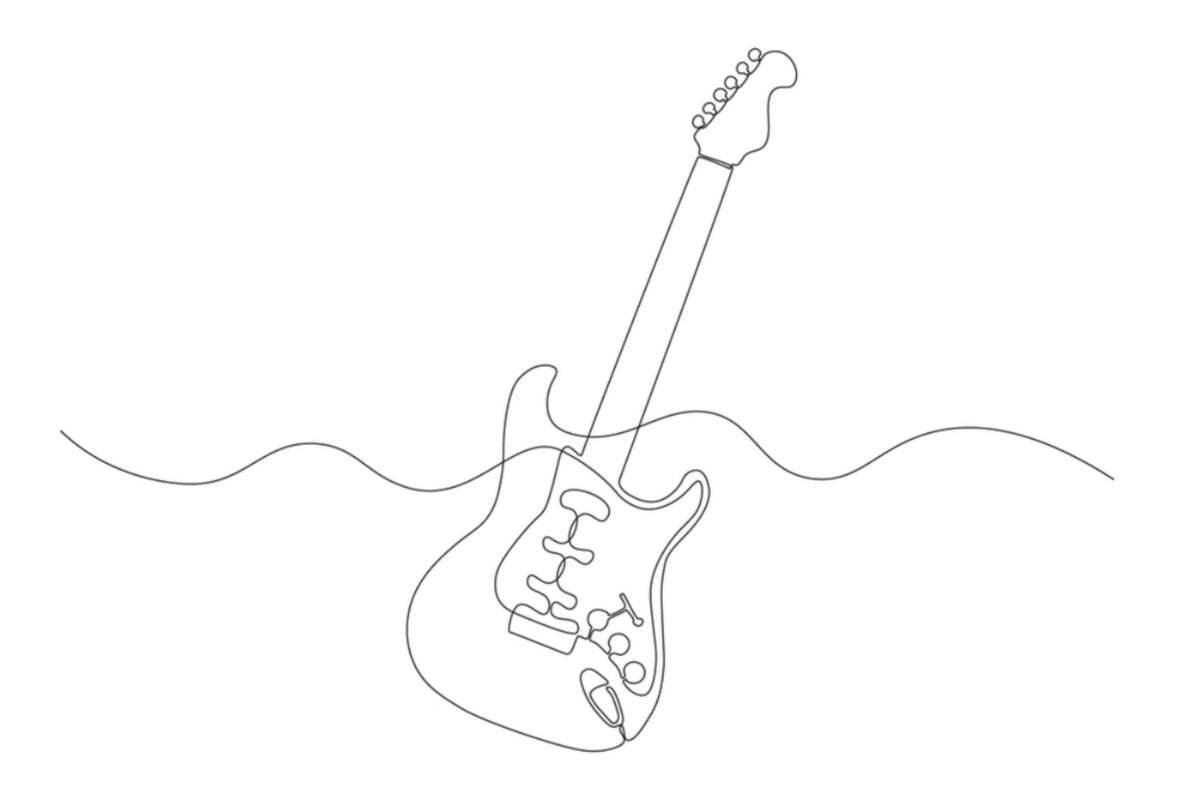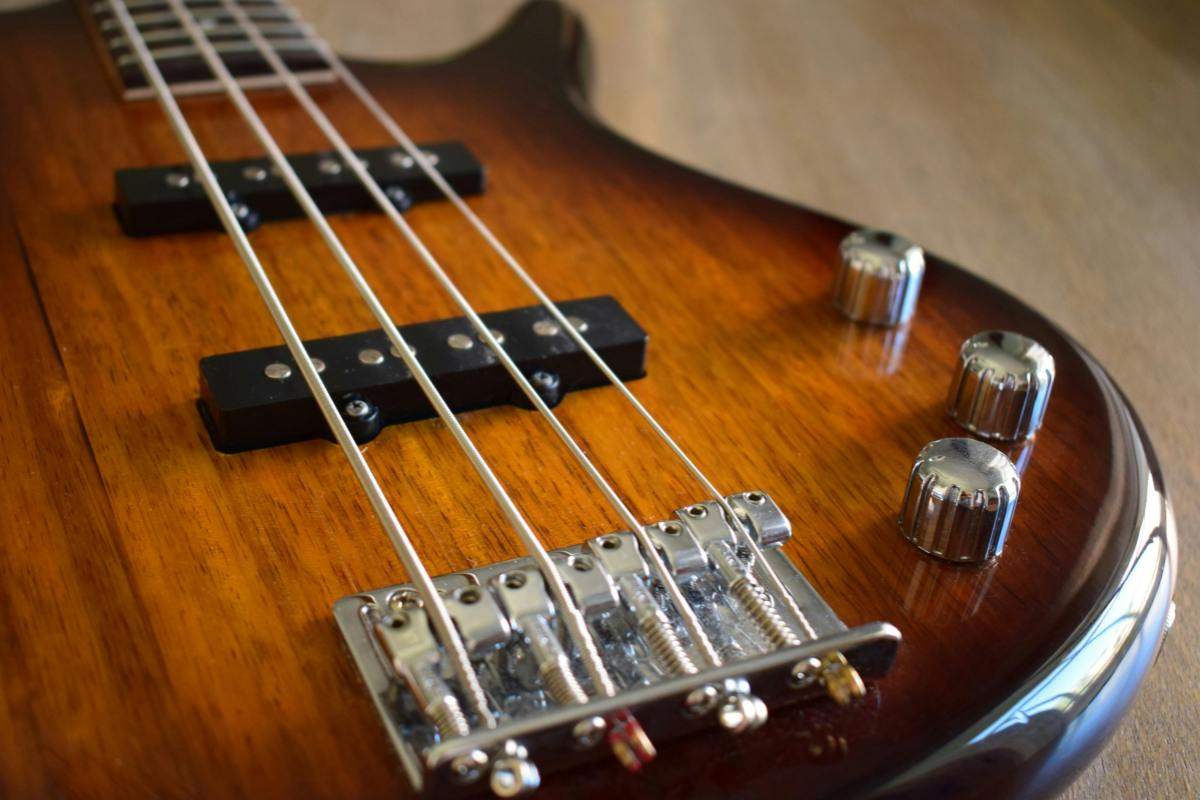Learning how to tune your guitar properly is one of the most important skills that any novice guitarist needs to master. You may be a budding virtuoso who can fly all over the neck, but unless your guitar is in tune, it will more than likely sound horrible.
So, let’s take a look at the various ways in which you can tune your guitar, starting with the easiest and cheapest. But before we get to that, a quick word on how a guitar is tuned, if you already know this, skip the next short paragraph.
A guitar is normally tuned in concert pitch in standard guitar tuning with the notes E - A - D - G- B- E representing the 6th (thickest) to the 1st (thinest) strings. There are lots of other tunings and pitches that are used by some guitarists, but we don’t need to go into them at this early stage.
How to use a Guitar Tuning App
There are now countless excellent Guitar Tuner Apps, simply go to wherever you download your apps from, put ‘Guitar Tuner’ in the search, and then browse until you find one that appeals to you. Lots are free (or free with an option to upgrade if you want all the features), this is usually a one-off payment and it’s very affordable.
Exactly how the app works will depend on which one it is, but they normally show a guitar neck and the 6 strings. They are usually automatic, so you start by tuning the low E string, then when it is in tune, the app will automatically change to the A string and you tune that, then onto the D string, etc.
Most have colored arrows or some other indicators that tell you if you are flat, in-tune, or sharp. You then adjust the tuning machines until a light (or multiple lights) flashes which is usually accompanied by a sound.
As mentioned, after the E string has been correctly tuned, the App normally moves onto the A string automatically. Then tune the A string in the same way as you did for the low E string until the App lets you know that you are in tune, and moves on to the D string.
Continue to tune every string until they are all in tune, then go back and check them all again because some strings may have gone slightly out of tune as you tune the other strings.

Next, let’s spend a bit of cash and learn…
How to use a Guitar Tuner
Guitar tuners are a step up from tuning apps because they physically exist. In terms of accuracy, most players think that there isn’t much of a difference. But in my opinion, ‘proper’ tuners have steadier needles which produce a more accurate tuning result, plus the fact that you are physically plugged into them with a cable (as opposed to using the microphone on your smartphone) generates a more solid signal. However, the biggest advantage of using a dedicated tuner as opposed to an App is when you are playing live. It’s far easier to stay in tune with a tuner at your feet next to your pedals than to get your smartphone out halfway through a performance.
There are many different types available, from simple tuners that clip onto your guitar's headstock, to pedal tuners that can be put on your pedalboard, to stand-alone tuners, all the way up to strobe tuners that cost many hundreds of dollars which are commonly thought to be the most accurate available.

How to tune your guitar using a tuner will vary depending on what type and brand you buy, but most are automatic, so they can recognize which string you are playing, then they will usually show if it is the correct note and if it is flat, in-tune, or sharp. You then adjust the tuning machine until it is perfectly in tune which is usually shown by a needle being in the center of the display, and/or a light (or a few lights) lighting up or changing color.
As with the App Guitar Tuners, start with the low E string, then work through the strings one by one until they are all in tune. After you have finished, go back to the low E string and check every string once again. This is because there are usually small tuning changes to strings that you have already tuned as you tune the other ones.

To end, let's move on to the hardest way to tune your guitar, by ear.
How to Tune Your Guitar by Ear
Because it is now so easy to tune a guitar using an app on your smartphone, many players don’t spend the time to learn how to tune a guitar by ear. It isn’t easy for most people and will take quite a bit of practice, but you will have two huge advantages after you have mastered it.
The first is that you end up on a beach somewhere around a campfire and a friend has brought along an old battered acoustic to play some singalong songs. However, the guitar has got completely out of tune while traveling to the beach and both your and your friend’s phone battery has died. You are now completely stranded. You have no electricity to charge a phone and you can’t tune by ear - party over!
The second reason is even more important. To be a great musician you need to develop a great musical ear. This takes years and years of practice, but if you work at it you will get there. Being able to tell what a note or chord is by only hearing it, or knowing what chord sequence is in a song just by listening to it is invaluable as a musician. And the first step to this mastery is by learning how to tune your guitar.
So, let’s find out how to do it…
In an ideal world, you need to start by tuning your low E string to a reference note. This can either be from a piano or keyboard, a tuning fork, or an online pitch recording. To do this, play the E note on a piano (or whatever method you are using) and tune the low E string to that note. If it sounds lower (flat) increase the tension by turning the tuning machine to make it sharper. Do this until the note on the piano and the guitar sound exactly the same.
A word of caution, it is a good idea to keep testing the string while you are tuning it to make sure that it is not getting overly tight. If you go past the target note (E) and keep tuning it up, you will notice that it is very tight and likely to break. If so, slacken the string off and try tuning it again.
Note: If you don’t have a reference note, you can still tune the guitar, but it will probably not be in standard pitch. You can still play songs on it, but your guitar may not be in tune with records (if you try playing along with them) or other musicians.
After you’ve got the low E in tune, place a finger on the 5th fret of the E string and play that note - this is an A note. Now tune the fifth string - the A string - to the note on the fifth fret of the E string.
Next, place a finger on the fifth fret of the A string - this note is a D. Then tune the fourth string - D - to that note. Then place your finger on the fifth fret of the D string - a G note - and tune the third string - G - to that.
All quite simple so far, so here comes the slight variation. Now play the fourth fret (as opposed to the fifth which we have used on every other string) of the G string - a B note - and tune the second string - B - to it. To finish, play the fifth fret on the second string (B) - an E note - and tune the high E string to it.
More than likely, you won’t get your guitar in tune the first, second, or even third time you try this. This is because if you are slightly out on one of the strings, the effect is compounded over the rest of the strings you tune. But don’t give up, practice makes perfect.
I tell all my pupils to have a go at tuning by ear when they start every practice session, and then when they have gone through every string, listen to the results. It doesn’t usually sound good when they first start doing it. Then I tell them to use another tuning method to make sure the strings are perfectly in tune before they start their exercises or songs.
However, over time, it may be a few days, weeks, or even months in some cases, they find that the guitar is far closer to being perfectly in tune just from tuning it by ear, and they have to make very few adjustments when they check it with a tuner. This is a sure sign that their musical ear has improved.
Wrapping it Up
You should now know the various ways in which you can tune a guitar. Use whatever suits you best, but don’t forget how important learning to tune the electric guitar by ear is. So, why not have a quick go at it every time you sit down to practice, you’ll notice improvements far quicker than you think, and it will help you develop the all-important musical ear.
If you like this article, please share it!
Be sure to join our FB Group Guyker Guitar Parts VIP Group to share your ideas! You can also have connections with like-minded guitar players, Guyker updates as well as discounts information from our FB Group.





